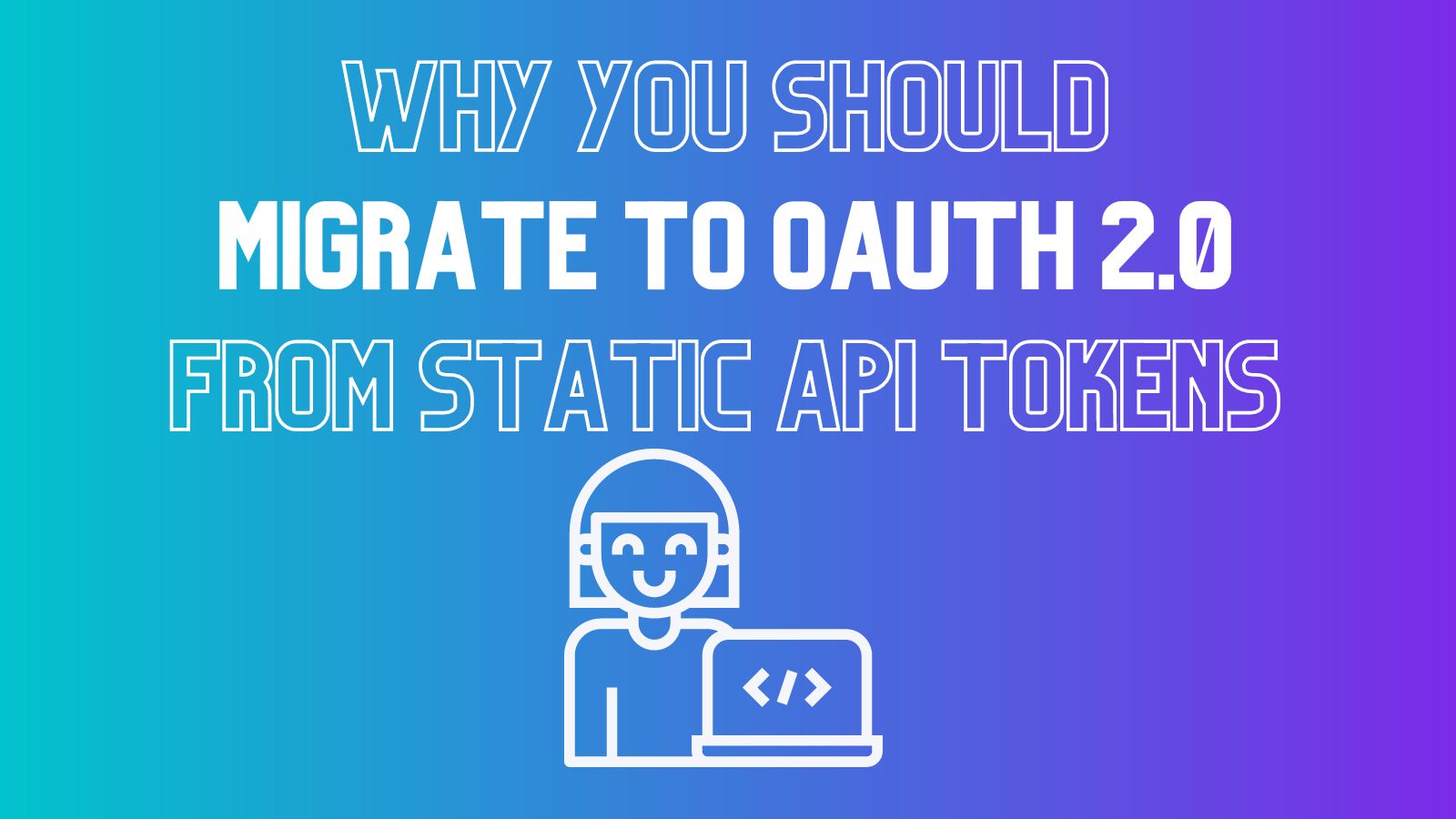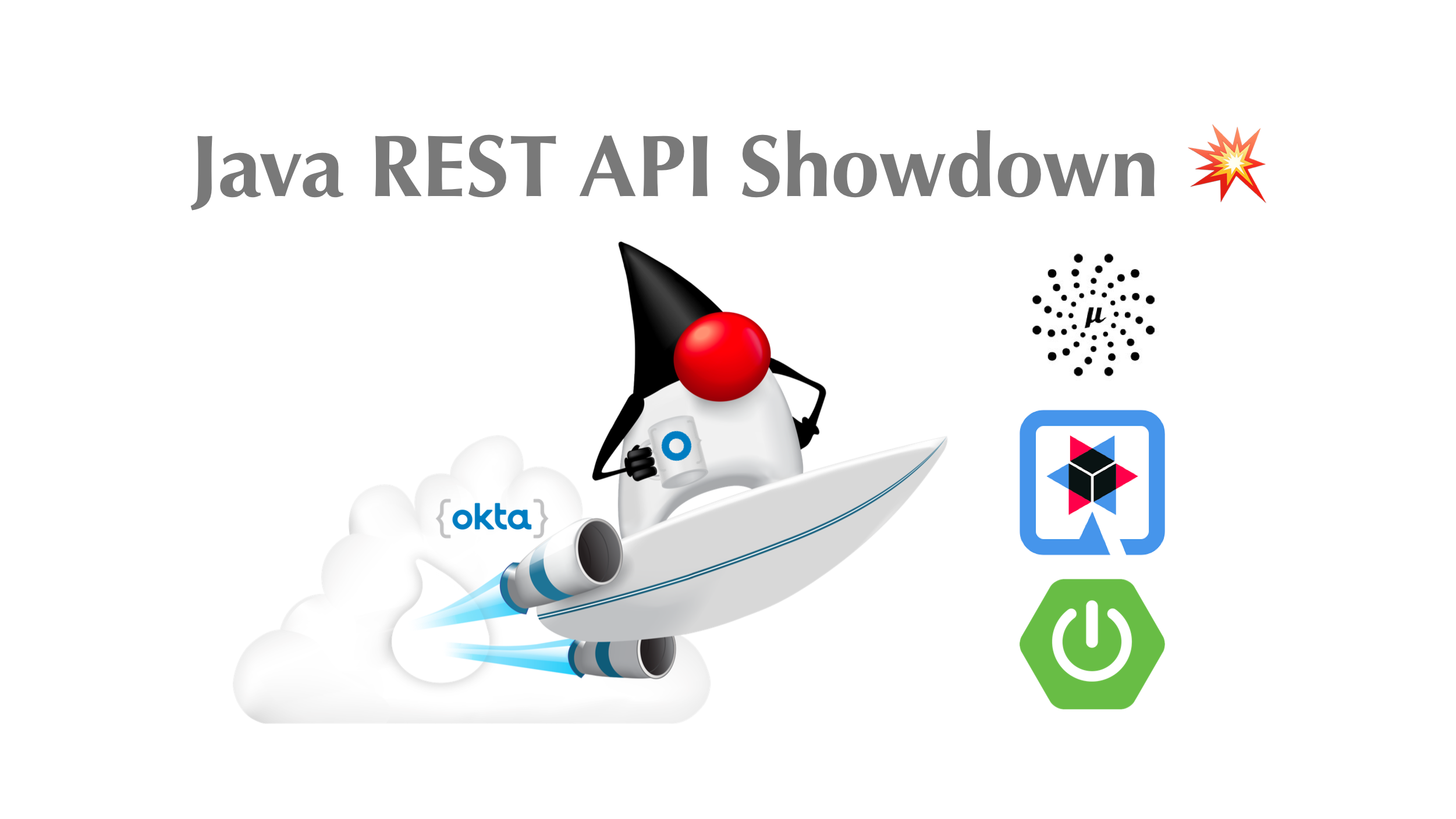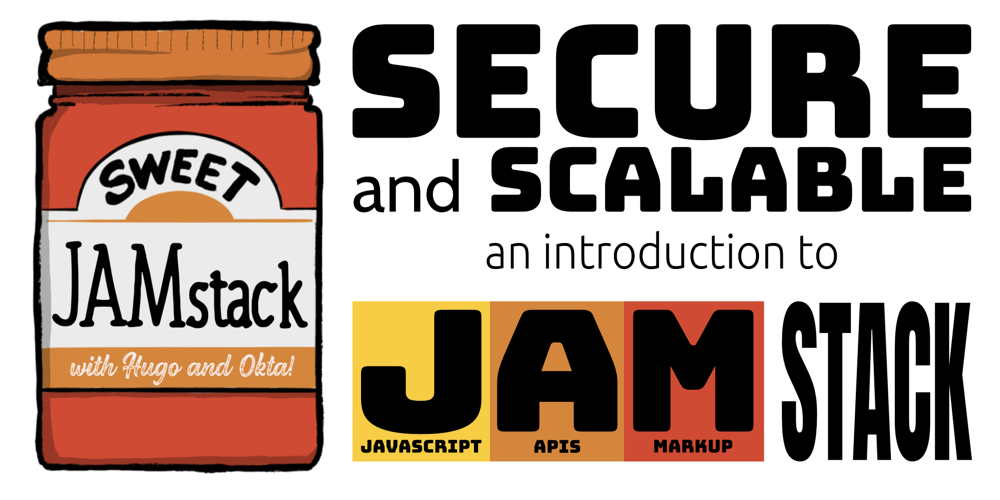Articles tagged api
Why You Should Migrate to OAuth 2.0 From Static API Tokens

Static API tokens have long been used to call external APIs and access the resources of third parties such as software vendors. As API standards have evolved, OAuth 2.0 emerged as the option offering more robust security, greater flexibility, and a better developer experience. Let’s explore the advantages of moving away from static tokens in favor of OAuth 2.0. Table of Contents Static API token landscape Shift from static API tokens to OAuth 2.0 for...
Building a WebAuthn Application with Java

The Web Authentication (WebAuthn) specification, given official approval by the World Wide Web Consortium (W3C) and the FIDO Alliance in 2019, aims to strengthen online security by allowing users to sign in to sites with elements like biometrics and FIDO security keys. The WebAuthn API can replace or supplement less-secure passwords, which may be weak and are often shared. WebAuthn is supported by default in Firefox and Chrome browsers and can be used in Edge...
Managing Multiple .NET Microservices with API Federation

For large enterprise companies, boundaries around each team are crucial for maintaining systems that are owned by software engineers. This is accomplished by allowing individual teams to own their systems and expose them via APIs. You also need to keep certain types of cross-cutting concerns centralized, like select security controls, logging, and routing. If you don’t, every API across different teams has to implement common controls like rate-limiting, logging, and authentication. This can lead to...
A Developer's Guide to Elasticsearch with Laravel

Elasticsearch is a search engine that can be integrated into any of your tech stacks using its REST APIs and its wide selection of libraries. By installing and integrating Elasticsearch into your system, you can add a search engine to your website, add autocomplete functionalities, use its machine learning functionalities to perform analysis on your data and provide better results for your users, and much more. In this tutorial, you’ll learn how to integrate Elasticsearch...
Java Records: A WebFlux and Spring Data Example

When defining classes for a simple aggregation of values, Java developers have traditionally relied on constructors, accessors, equals(), hashCode() and toString(), an error-prone practice that has low value and shifts the focus away from modeling immutable data. Java records were introduced as a first preview in JDK 14 in order to simplify how we write data carrier classes. The second preview came in JDK 15 and the finalized feature arrived in JDK 16. A summary...
Centralize Authentication at the Gateway with Apache APISIX and OpenID Connect

Apache APISIX is a dynamic, real-time, high-performance API gateway, providing rich traffic management. The project offers load balancing, dynamic upstream, canary release, circuit breaking, authentication, observability, and many useful plugins. In addition, the gateway supports dynamic plugin changes along with hot-plugging. The OpenID Connect plugin for Apache APISIX allows users to replace traditional authentication mode with centralized identity authentication mode via OpenID Connect. NOTE: This post originally appeared on the Apache APISIX blog. Table of...
The Rails Guide to Securing an API

In this tutorial we are going down a different track then our last Ruby Post (bad pun intended). Instead diving into building a very simple API that, of course, we will secure with access tokens minted by our very own Okta OAuth server. We’ll make requests to this API via Postman to keep things nice and simple. Now let’s get chugging along. (OK, that’s the last pun for a bit.) Prerequisites for this blog post...
Use Kong Gateway to Centralize Authentication
A customer once asked me: “Hey – Can Okta integrate with Kong?” Spoiler alert: You totally can integrate Kong with Okta using its OpenID Connect plugin. Still stuck wondering what an API gateway even is? Here’s a metaphor that works for me: You know that sci-fi movie trope in which you have a centralized hub that “jumps” you to other places in the galaxy? In that kind of system all the screening and security happens...
Use Okta like a Rockstar

Rockstar chrome extension is a third-party, Non-Okta Application (as defined in Okta’s Master Subscription Agreement). Okta is not involved in making this chrome extension available, and we have neither oversight nor input into its security features and functionality. For questions regarding this, or any other, Non-Okta Application(s) your organization uses in connection with the Okta Service, please contact the application provider directly for more information. Rockstar is a Chrome extension that adds features to the...
Build a Modern API using Fastify and Node.js

Fastify is just as the name implies, fast. Not just in terms of development speed—its low overhead means the server is fast as well. When writing APIs, speed on both sides is paramount. Fastify is a web framework for Node.js that was designed for efficiency. Fastify is fully extensible with hooks, plugins, and decorators. It is schema-based, meaning you can define your response and request objects in your routes and have Fastify do the data...
Welcome Nick Gamb
My name is Nick Gamb and I am excited to be joining the Okta Developer Advocacy team for the .NET community. Who Am I At heart, I am just an inquisitive nerd who has had a very fortunate career getting to do many different things. I love video games, computers, programming, hacking, security, DevOps, data, film, photography, sound design, editing -it’s a long list. For the brave and interested, the longer, but still condensed, version...
Build Easy User Sync Webhooks with Okta

Okta is an identity platform focused on making authentication easy to build with minimal code, and you’ll often hear us say that by using Okta you’ll never have to build authentication again. A lot of companies benefit from using our platform, which allows them to easily prompt for multi-factor authentication (MFA) based on contextual policies, offer self-service password resets and registration, and of course authentication, including federation to enterprise identity providers and social media accounts....
Build A Secure Node.js API with KoaJS

Koa is a web framework from the makers of Express. Koa is designed to be middleware-driven and extremely lightweight. It is so lightweight that it comes without any middleware on its own. But not to fear, there are plenty of packages available for basic functionality such as routing, authentication, body parsing, and more. You can also write your own custom middleware— I’ll show you how in this tutorial. Koa prides itself on using async functions...
Build a Weight Tracker App with Node.js and PostgreSQL
Did you make any resolutions this year? One resolution I seem to make every year is to lose weight and exercise. Sometimes I even stick to it. A good way I have found to keep on track with any resolution is to record progress. There’s something about visualizing progress that helps me stay motivated. In this tutorial, you are going to create a modern Node.js application to keep track of weight measurements. We’ll use technologies...
Stop Writing Server-Based Web Apps

The World-Wide Web, as we know it, started around 1993 by serving static HTML files with links to other HTML files. It didn’t take long for developers to find ways of making websites more “dynamic” using technologies like Common Gateway Interface (CGI), Perl, and Python. Since the ’90s, I have built web applications using a variety of languages, platforms, and frameworks. I’ve written application frameworks, content management systems, a blog engine, and a social media...
Protecting a PHP API Using OAuth

REST APIs are a big part of today’s Internet. Some of the everyday use cases of REST APIs are: driving the backend of single-page Web applications/mobile applications integrating different applications to exchange data and automate workflows providing the communication channel for the different parts of a complex service-oriented architecture connecting IoT devices. REST API security is essential because an API can expose powerful, mission-critical, and outright dangerous functionality over the Internet. For example, a fintech...
Java REST API Showdown: Which is the Best Framework on the Market?

Developing services in Java, including REST APIs, wasn’t always easy or productive until Spring came along and changed the landscape. Many years have passed since then, and new frameworks have emerged in the community. One of these frameworks was Micronaut. It’s developed by OCI, the same company behind Grails, and their goal is to help developers create microservices and serverless applications. There is also Quarkus, another framework that gained popularity over the last year. Developed...
Get Started with Koa.js for Node Applications

Ever since JavaScript made its giant leap from frontend to backend more than 10 years ago, Express has been the go-to library for writing server-side javascript and virtually synonymous with Node.js. It was (and in many aspects it still is) a modern and simple approach backend APIs. Declarative tree-like structure of routes, native support for middleware, asynchronous request processing and a miniature memory footprint all make Express very robust for a backend. As good as...
Secure and Scalable: An Introduction to JAMStack

If you’re a web developer, chances are you have heard the term “JAMstack.” Curiously, JAMstack isn’t a solution to prevent clogged printers, something to eat on toast, or a way to make music. However, by the time you finish reading this tutorial, you’ll understand JAMstack and its benefits, and learn one approach to implementing JAMstack for yourself. Let’s get ready to JAM. The “JAM” in JAMstack stands for JavaScript, APIs, and Markup. JAMstack’s pattern of...
5 Essential Tips for Building Developer Libraries

As a software developer, it’s your job to know your customers and their use cases well enough to create an elegant and functional solution. This understanding will help you succeed and ultimately enjoy watching them love and use your applications. When building libraries, your clients are other developers just like you, and in addition to providing a functional library that meets their needs, you need to deliver a great experience when using your product. In...
Build a CRUD App with Node.js and GraphQL

There are so many options when it comes to building out a simple CRUD (Create, Read, Update, Delete) app. The most refreshing data access layer to work with recently by far has been GraphQL. It’s great because the developer can use a simple, strongly typed language to define models and their relationships, then provide functions to define how each piece should be resolved. The user can then pick and choose which pieces they want and...
Build a Node.js API with TypeScript

JavaScript has been turning into more and more of a robust language and is no longer just seen in browsers. Server-side JavaScript has become quite relevant. However, one major thing that JavaScript is not, is a strongly typed language. Being explicit with what types to expect from function parameters or object and class properties can help prevent bugs from creeping into the code. It can also help make the code easier to understand if you...
Build a GraphQL API with ASP.NET Core

“There is no Frigate like a Book To take us Lands away…” – Emily Dickinson These days, people read more on social media than they do in books. Maybe the remedy is to make reading more social. To that end, we’ll create an API for books. This will be an ASP.NET Core 2.2 Web API using GraphQL, which will allow developers to create applications that consume the API securely. ASP.NET Core 2.2 provides the ability...
Build a REST API with ASP.NET Core 2.2

ASP.NET Core is entirely open source, free, has built-in DI and logging, works smoothly with a fantastic ORM and has tons of built-in features within Web API framework, and on top of that you get Microsoft support for free, maturity and flexibility of C# and ASP.NET, it’s evident that ASP.NET Core is easily one of the best picks for building REST APIs. Lots of folks keep a daily journal that is essentially a detailed log...
Build a REST API with Node and Postgres

If you haven’t heard of PostgreSQL (often called Postgres), today’s your lucky day. It’s a robust, open source relational database that powers some of the world’s largest applications. In this post, I’ll show you how to create a REST API in Node that uses Postgres as a data store. I’ll walk you through setting everything up, so if you’re not familiar with Postgres, don’t worry. Specifically, I’m going to walk you through building an API...
Welcome Micah Silverman

My name is Micah Silverman and I just joined the Developer Advocacy team at Okta. TL;DR - There are some easter eggs in this post. If you want to know what they’re all about - jump to the bottom. Funny thing is, I’ve been working for Okta for 2 years now, just on different teams. It was in the Sales Engineering and Education Services teams that I learned all the ins and outs of the...
Why OAuth API Keys and Secrets Aren't Safe in Mobile Apps

It’s pretty common for mobile apps to access backend API services to fetch data. It’s also pretty common for APIs to require secret keys in order to access them. So how do you securely include API keys in a mobile app? Well, the short answer is you don’t. The long answer is the rest of this blog post. Let’s take a look at two ways it’s possible to hack secret API keys out of mobile...
Build a Simple API Service with Express and GraphQL

GraphQL has become an immensely popular alternative to REST APIs. The flexibility you get from using GraphQL makes it easier for developers to get any information they need for an app, and just the information they need for that portion of the app. That gives you the feel of a very customized API and can help cut down on bandwidth. In this tutorial, I’ll show you how to write a custom GraphQL API using Node...
Secure Your API with OAuth, Mulesoft, and Okta in 20 Minutes
If you’re building or managing an API, you’re probably using an API gateway to help you manage it. Hopefully, you’re also using OAuth and an identity provider (IdP) like Okta to secure your API through the gateway. Maybe you’ve also discovered that getting the “OAuth dance” working properly among the gateway, IdP, and application can be tricky. I’ve worked with a lot of different API gateways and want to provide some guidance and tools to...
Set Up and Enforce Multi-Factor Authentication with the Okta API
So, you’re building a custom app and you need to include support for multi-factor authentication (MFA). Did you know that Okta’s API can support multi-step MFA workflows? The diagram below shows the primary authentication flows with MFA enrollment and enforcement enabled. Okta has a push-based verification app called Okta Verify. It’s available on the Google Play and Apple App stores. Okta Verify is similar to Google Authenticator, except it adds the additional feature of supporting...
Spread Serverless Holiday Cheer with Lambda and API Gateway
It’s that time of year again: Christmas music on the radio, festive decorations in the workplace, and a chill in the air. Except in the Southern Hemisphere, where it’s warm and balmy. And on the International Space Station, where the temperature is strictly regulated. But I digress. It’s a season for reconnecting with loved ones, exchanging gifts, and eating delicious food. And, if you’re like me, a little downtime to work on fun projects. Looking...
Use Kong Gateway to Centralize Authentication
NOTE: The video and code in this post has just been updated for 2021! A customer once asked me: “Hey – Can Okta integrate with Kong?” My first thought was: “What’s Kong?” A Google result later, I was introduced to the Kong API Gateway – an open-source API Gateway and Microservices management layer. Spoiler alert: You totally can integrate Kong with Okta using its OpenID Connect plugin. Still stuck wondering what an API gateway even...
Demystifying OAuth
It seems that OAuth 2.0 is everywhere these days. Whether you are building a hot new single page web application (SPA), a native mobile experience, or just trying to integrate with the API economy, you can’t go far without running into the popular authorization framework for REST/APIs and social authentication. During Oktane15, Karl McGuinness, our Senior Director of Identity, demystified the powerful, yet often misunderstood, world of OAuth 2.0 and shared details on Okta’s growing...